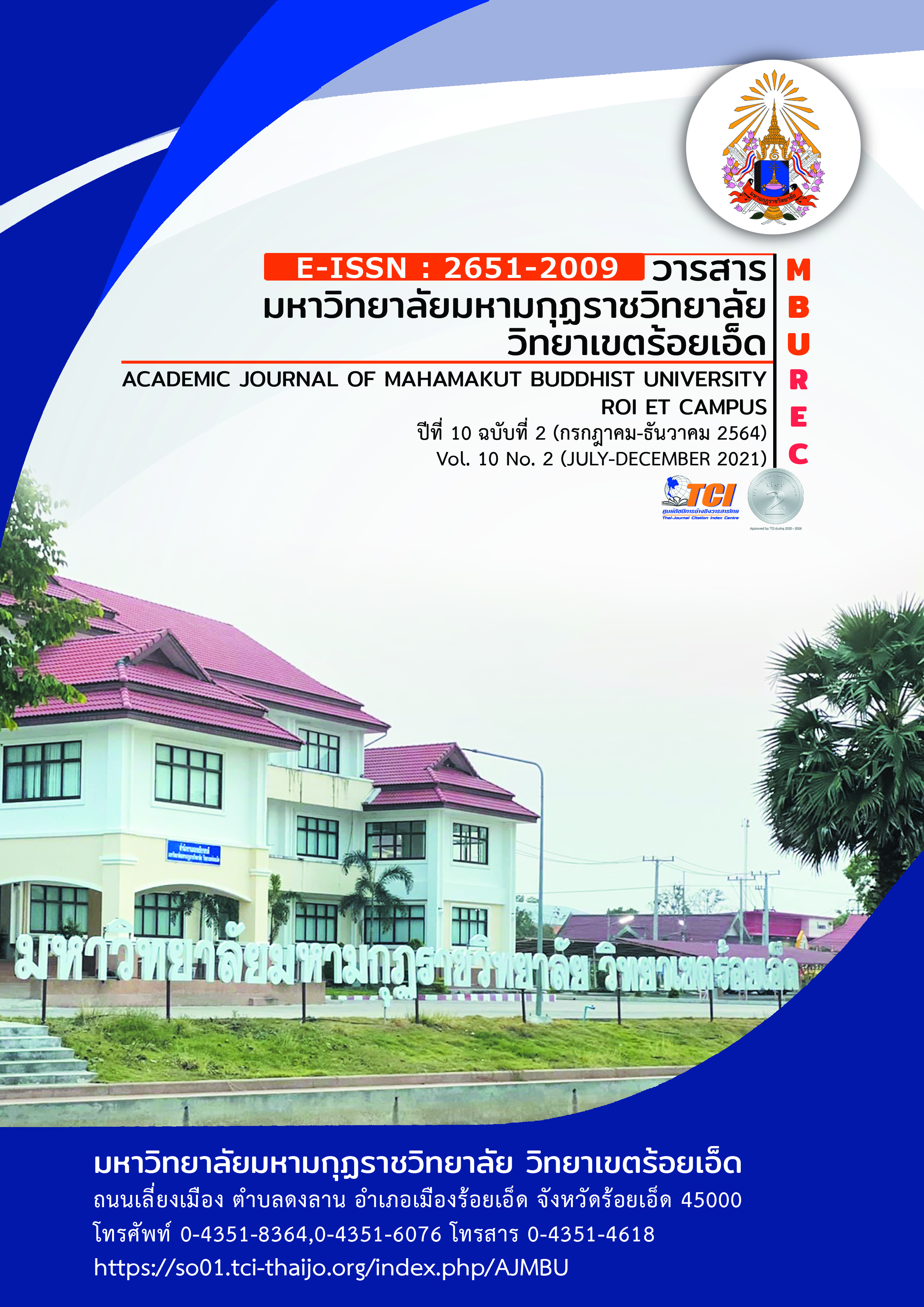The Effects of 7Es Learning Cycle Supplemented with Predict–Observe–Explain Technique on Biology Achievement and Science Process Skill of Matthayoumsuksa 5 Students
Main Article Content
Abstract
The objectives of the research article were to study and compare Matthayomsuksa 5students’Biology achievement andscience process skills achievement that received activity learning through the 7Es learning cycle supplemented with Predict-Observe-Explain technique before and after learning. The One Group Pretest-Posttest Design was implemented in this study. The sample group consisted of 27 Matthayomsuksa 5. They were selected by Cluster Random Sampling. The instruments used in this research were the 7 Es learning cycle supplemented with Predict-Observe-Explain technique lesson plans; the Biology achievement test and science process skills achievement test. The collected data were statistically analyzed for mean, percentage, standard deviation Dependent Sample t-test and One Sample t-test.
The results revealed that: 1.The Matthayomsuksa 5 students’ Biology achievement that received activity learning through the 7Es learning cycle supplemented with Predict-Observe-Explain technique,the mean score collected from post- Biology achievement test was significantly higher than those collected from pre- achievement test at the .01 level and post- Biology achievement test higher than minimum criteria 75 percent. 2. The Matthayomsuksa 5 students’Biology achievement that received activity learning through the 7Es learning cycle supplemented with Predict-Observe-Explain technique, there is the science process skills achievement post- test score higher than pre-test score at significance level of .01 and the science process skills achievement post- test score
Article Details
References
กระทรวงศึกษาธิการ. (2551). หลักสูตรแกนกลางการศึกษาขั้นพื้นฐาน พุทธศักราช 2551. กรุงเทพมหานคร : โรงพิมพ์ชุมนุมสหกรณ์การเกษตรแห่งประเทศไทย.
น้ำค้าง จันเสริม. (2551). ผลการจัดกิจกรรมการเรียนการสอนเรื่องงานและพลังงานชั้นมัธยมศึกษาปีที่ 4 บนพื้นฐานของทฤษฎีคอนสตรัคติวิสต์โดยใช้วิธี POEs. วิทยานิพนธ์ปริญญาศึกษาศาสตรมหาบัณฑิต. บัณฑิตวิทยาลัย : มหาวิทยาลัยขอนแก่น.
ประสาท เนืองเฉลิม. (2550). การเรียนรู้วิทยาศาสตร์แบบสืบเสาะหาความรู้ 7 ขั้น. วารสารวิชาการ. 10(4). 28-30.
ลักษณา ศิริมาลา. (2553). ความสามารถในการแก้ปัญหาและผลสัมฤทธิ์ทางการเรียนวิทยาศาสตร์ของนักเรียนชั้นมัธยมศึกษาปีที่ 1 ที่เรียนโดยรูปแบบการเรียนการสอน 7E. วิทยานิพนธ์ปริญญาศึกษาศาสตรมหาบัณฑิต. บัณฑิตวิทยาลัย : มหาวิทยาลัยขอนแก่น.
สถาบันส่งเสริมการสอนวิทยาศาสตร์และเทคโนโลยี. (2545). คู่มือการจัดการเรียนรู้ กลุ่มสาระการเรียนรู้วิทยาศาสตร์. กรุงเทพมหานคร : สถาบันส่งเสริมการสอนวิทยาศาสตร์และเทคโนโลยี.
Abraham, M.R. and Renner. J.W. (1986). The Sequence of Learning Cycle Activities in High School Chemistry. Journal of Research in Science Teaching. 23(2). 121–143.
Ebrahim, Ali. (2004). The Effects of Traditional Learning and a Learning Cycle Inquiry Learning Strategy on Students’ Science Achievement and Attitude Toward Elementary Science. Dissertation Abstracts International. 65(4). 1232-A.
Eisenkraft. (2003). Expanding the 5E Model: A proposed 7E model emphasizes “transfer of learning” and the importance of eliciting prior understanding. The Science Teacher. 70(6). 56-59.
White R. and Gunstone R. (2006). Probing Understanding. 6th ed. Eastbourne : CPI Antony Rowe.


